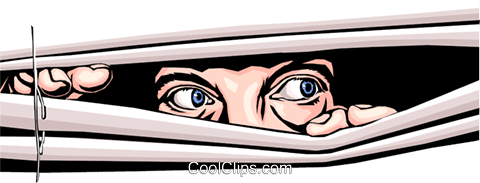How Understanding the Chemovar Can Aid Product Design
No one consuming cannabis likes peering through the drapes, wondering who’s out there and what unjustifiable thing they might want, or to be curled into the fetal position, fretting, sweating, waiting. At least, I don’t think consumers want that experience. So, it’s important to understand what molecules in cannabis may be anxiety-causing (anxiogenic) and anxiety-relieving (anxiolytic). A survey of 1,429 medical cannabis patients revealed that 58% used cannabis to relieve their anxiety. [1] If that percentage is at all statistically representative of the throngs of people using cannabis, the need for anxiolytic products is paramount.
A more recent study evaluated cannabis users’ perceptions of different cultivars to nominate those demonstrating anxiolytic or anxiogenic effects. [2] Researchers surveyed the study participants to first identify which cultivars they preferred or steered away from when navigating through the myriad of options, at least from a marketing name perspective. Unsurprisingly, members of the Kush group comprised 3 of the top 4 anxiolytic cultivars (219 people voted). When it came to the cultivars that were least effective in treating anxiety, Chocolope garnered the most votes, followed by CBD Shark, and Tangerine Dream (189 people voted).
Once the researchers had some direction from these polls, they wanted to determine which molecules might best distinguish these cultivars. They used liquid and gas chromatography to quantify 8 cannabinoids and 29 terpenes, respectively. A mathematical method enabled the correlation of specific molecules as having more or less anxiolytic activity. Their findings were a bit surprising, as cannabidiol was labeled as less anxiolytic than delta-9 tetrahydrocannabinol. (Before there’s a riot, it’s good to point out that (a) one of the voted upon “least effective” cultivars was a CBD-dominant plant, which could have skewed the results, and (b) this study had 442 participants, but less than half voted for either category, so this clearly isn’t an exhaustive sample population.).
More importantly, specific terpenes demonstrated correlations with being less effective for anxiety, including alpha-phellandrene, 3-carene, eucalyptol, alpha– and gamma-terpinene, terpinolene, sabinene hydrate, and guaiol. Those terpenes associated with anxiolytic properties included trans-nerolidol, valencene, gamma-terpineol, sabinene, alpha-pinene, beta-caryophyllene, caryophyllene oxide, and alpha-bisabolol.
This is an Extraction Magazine blog, though, I know. So, what’s the relevance? As product manufacturers seek to design novel formulations based on real science and patient feedback, studies like this can help identify molecules of interest. Some companies are deconstructing the plant into fractionated stockpiles of molecules, and when creating their molecular blueprint, they can better ensure that they aren’t adding something that might have the opposite effect of their intentions. And while this study is limited in scope, and cannabis is highly individualistic, research efforts like this can better arm product architects with useful information.
References
[1] Sexton, M. et al. “A Cross-Sectional Survey of Medical Cannabis Users: Patterns of Use and Perceived Efficacy.” Cannabis and Cannabinoid Research, vol. 1, no. 1, 2016. DOI: 10.1089/can.2016.0007. [journal impact factor = N/A; cited by 42]
[2] Kamal, B. et al. “Cannabis and the Anxiety of Fragmentation—A Systems Approach for Finding an Anxiolytic Cannabis Chemotype.” Front. Neurosci., vol. 12, no. 730, 2018. [journal impact factor = 3.648; cited by 1]













